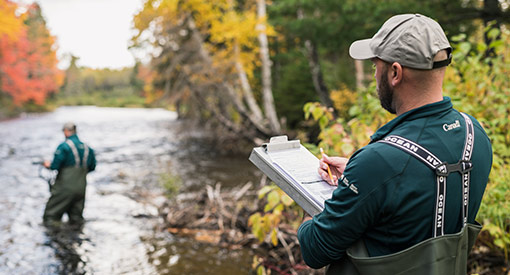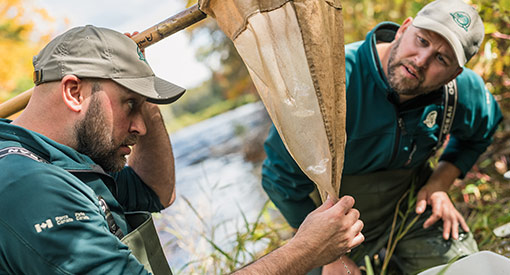
Ecological integrity
Kouchibouguac National Park
Canada’s national parks protect and preserve our natural heritage for the benefit of all Canadians, now and in the future. Our national parks are home to innumerable wild plants and animals, some in danger of extinction, and by keeping their habitats safe and intact we can all help to ensure their future.

Management of our national parks must be based on a clear understanding of ecosystems and of all possible stresses on them. To ensure the continuity or sustainability of our park, we must view the natural environment as a whole, being careful to ensure that decisions take into consideration the interactions and dynamic nature of ecosystems as well as their capacity to withstand and recover from stress.
Together we can make a difference. To maintain the balance of nature, we must all be attentive to the impact we have on it.
Our primary objective is to ensure “ecological integrity.” This means that we want to keep our national park ecosystems healthy. An ecosystem is formed by the interaction of all living things with one another and with their habitat in a particular environment. Ecosystems are complex and constantly changing. People are an integral part of natural ecosystems; keeping them healthy helps to enhance the quality of our lives as well.

For national parks, ecosystem management considers the following:
- Ecological integrity should be assessed using both western science and Indigenous knowledge. These perspectives allow a deeper understanding known as “two-eyed seeing.”
- Because ecosystems are constantly changing, conservation strategies should maintain or restore key ecological processes that reflect their natural condition. For example, prescribed burning is used as a way to reintroduce fire in national parks.
The ecological integrity condition of our park is determined by assessing three indicators (ecosystems) in the park; coastal, forest, and freshwater. There are five measures for each of these ecosystems, which are monitored then assessed against thresholds, and given a status such as red (poor), yellow (fair) or green (good) along with a trend such as increasing, decreasing or stable. We work hard to improve the status of our ecosystems each year.
- Date modified :